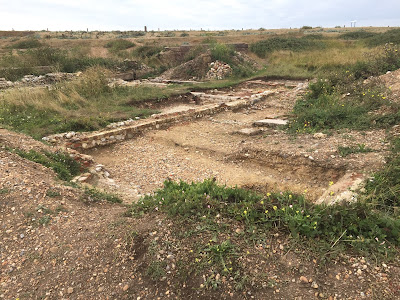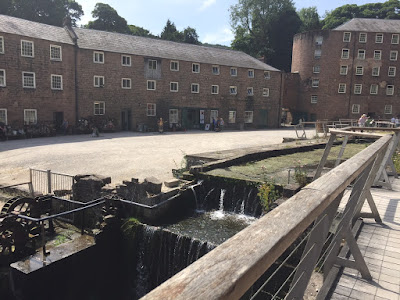For a while, we've thought it would be nice for Ricky to have another dog to run around with (and hopefully to settle down with as well...). We're now complete, besotted, converts to sighthounds, so Jim started looking into various lurcher rescues.
And, to cut (appropriately) to the chase, here is Geoffrey.
Geoffrey is a
galgo, originally rescued in Spain, and rehomed through
Lozza's Lurcher Rescue in Hertfordshire.
There was a big hole in my knowledge where
galgos should have been, which I have rapidly made up for - how could we not have heard of them? What I have learnt so for is this -
galgos are an ancient breed of hunting dog, originally Celtic and introduced into Spain from France (hence the name, meaning that they're from Gaul). Over the centuries the British greyhound has diverged as its been bred for different purposes and kinds of racing. Looking at Geoffrey, he does have the look about him of something a Medici would have had on a lead, or an Spanish noble in a Velasquez painting.
Indeed,
galgos were originally the hunting dogs of the nobility. but not so these days. Like many animals in Spain, they are not treated well, to say the least. They are used for hunting and competitive coursing, bred in vast numbers and all but the best racers abandoned - and even those chosen for competetion kept hungry, cruelly punished if they don't perform well, and abandoned or killed when their coursing career is over at two or three years old. This
article from the National Geographic gives a relatively unsensationalised and unsentimental account.
Geoffrey was very nervous at first but is already settling down. He's very gentle and placid, even a little timid, and Ricky is certainly top dog. Geoffrey isn't even interested in getting on the sofa (yet) and you can see from the state of his elbows that he's been used to lying on a concrete floor. But he does seem to feel able to relax...
He likes going for walks and walks well on the lead. He's very friendly to other dogs, and to most people; just a bit wary of men, and he doesn't like sudden noises. We're hoping that Ricky's example will help Geoffrey to become more chilled.
Galgos differ from greygounds in a number of ways (this is a bit like the Woolwich/Northwich thing). They have much greater stamina for a start, and this is reflected in a different kind and distribution of their muscles. They're a bit stockier, and their hips are higher than their shoulders, and their heads proportionately a bit smaller looking than a greyhound's, giving them that old fashioned painting look. And they have very long thin tails.
Ricky is, at our best estimate, a 'racing whippet' - half whippet, half greyhound. Geoffrey is considerably bigger than him, although still not as big, I don't think, as a big greyhound. We'll have to wait until he meets Buzz to check that out.
Early days yet, but Geoffrey is already starting to feel like part of the family - let's hope he feels that way too.




















